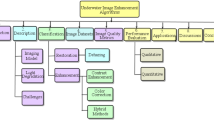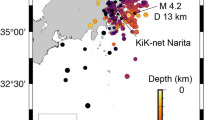Abstract
In view of the heterogeneity and week similarity of random noise in the desert seismic exploration, and lots of random noise focused on low frequency, the traditional bandpass filter and wavelet transform are used to separate the signal and noise. Although there are some denoising effects, the noise cannot be suppressed well, and effective signal is damaged to some extent. Because of the above shortcomings, we propose a bandpass filter denoising method based on spectral kurtosis in this paper. This method is based on the signal and the random noise’s energy distribution characteristics in the frequency domain. First, through short-time Fourier transform (STFT), the spectral kurtosis of noisy signals is obtained. Second, we design a new threshold by the obtained spectral kurtosis, the value of spectral kurtosis greater than the threshold is preserved, and the spectral kurtosis less than the threshold is set to 0. So, the method realises the adaptive choice of the filter passband, getting an adaptive bandpass filter. At the same time, the noise can be suppressed to a greater extent while the effective signal is retained very well. The noise removal results of synthetic data and actual data show that the proposed method has very good denoising performance and amplitude preserving capability.





Similar content being viewed by others
References
Antoni J (2006) The spectral kurtosis: a useful tool for characterising non-stationary signals. Mech Syst Signal Process 20(2):282–307
Antoni J, Randall RB (2006) The spectral kurtosis: application to the vibratory surveillance and diagnostics of rotating machines. Mech Syst Signal Process 20(2):308–331
Chang SG, Yu B, Vetterli M (2002) Adaptive wavelet thresholding for image denoising and compression. IEEE Trans Image Process A Publ IEEE Signal Process Soc 9(9):1532–1546
Combet F, Gelman L (2009) Optimal filtering of gear signals for early damage detection based on the spectral kurtosis. Mech Syst Signal Process 23(3):652–668
Cramér H (1971) Structural and statistical problems for a class of stochastic processes. Princeton University Press, Princeton
Cramér H (2010) Structural and statistical problems for a class of stochastic processes/harald cramér. East Afr J Publ Health 7(2):140–143
Dwyer R (1983) Detection of non-Gaussian signals by frequency domain Kurtosis estimation. In: IEEE international conference on acoustics, speech, and signal processing, ICASSP 8:607–610. IEEE
Johnstone IM, Silverman BW (1997) Wavelet threshold estimators for data with correlated noise. J Roy Stat Soc 59(2):319–351
Kar SS, Maity SP (2016) Retinal blood vessel extraction using tunable bandpass filter and fuzzy conditional entropy. Comput Methods Progr Biomed 133:111–132
Liu H, Zhang Z, Liu S, Liu T, Chang Y (2015) Destriping algorithm with L0 sparsity prior for remote sensing images. IEEE International Conference on Image Processing, IEEE
Lei SF, Ahroon WA, Hamernik RP (1994) The application of frequency and time domain kurtosis to the assessment of hazardous noise exposures. J Acoust Soc Am 96(3):1435–1444
Lin H, Li Y, Yang B, Ma H (2013) Random denoising and signal nonlinearity approach by time-frequency peak filtering using weighted frequency reassignment. Geophysics 78(6):V229–V237
Sinno Z, Caramanis C, Bovik AC (2018) Towards a closed form second-order natural scene statistics model. IEEE Trans Image Process 27(7):3194–3209
Tian Y, Li Y, Yang B (2014) Variable-eccentricity hyperbolic-trace tfpf for seismic random noise attenuation. IEEE Trans Geosci Remote Sens 52(10):6449–6458
Wu N, Li Y, Tian Y, Zhong T (2016) Trace-transform-based time-frequency filtering for seismic signal enhancement in northeast china. C R Géosci 348(5):360–367
Xiong M, Li Y, Wu N (2014) Random-noise attenuation for seismic data by local parallel radial-trace TFPF. IEEE Trans Geosci Remote Sens 52(7):4025–4031
Zhang C, Li Y, Lin HB, Yang BJ (2015) Seismic random noise attenuation and signal-preserving by multiple directional time-frequency peak filtering. C R Géosci 347(1):2–12
Zhuang G, Li Y, Liu Y, Lin H, Ma H, Wu N (2014) Varying-window-length tfpf in high-resolution radon domain for seismic random noise attenuation. IEEE Geosci Remote Sens Lett 12(2):404–408
Acknowledgements
The work was supported by The Nation Science Foundation of China (Grant Nos. 41730422, 41774117).
Author information
Authors and Affiliations
Corresponding author
Rights and permissions
About this article
Cite this article
Ma, H., Qian, Z., Li, Y. et al. Noise reduction for desert seismic data using spectral kurtosis adaptive bandpass filter. Acta Geophys. 67, 123–131 (2019). https://doi.org/10.1007/s11600-018-0232-0
Received:
Accepted:
Published:
Issue Date:
DOI: https://doi.org/10.1007/s11600-018-0232-0




